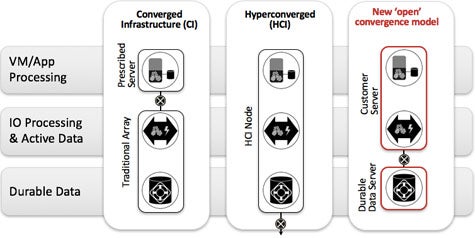There’s a fierce debate these days over just how and where to deploy Flash storage. Many IT organizations have opted to plug Flash storage directly into a server where it can typically only be accessed by a limited number of applications running on that system. Other IT organizations prefer storage arrays that may introduce additional network latency, but have the benefit of making that Flash storage accessible to many more servers.
As part of an effort to provide the best of both of those worlds, Datrium created an implementation of Flash storage that can be deployed directly on a server that also provides a way for that Flash storage to be made accessible to other servers. Today Datrium announced it can now make 100TB of Flash storage available per server using Datrium DVX software running on top of a virtual machine.
Datrium CEO Brian Biles says most IT organizations these days want to keep as much live data as possible running on the host. But they also need to find a simple way to share that data with other applications. Rather than organizations having to invest in a separate storage array or hyperconverged platform, Biles says, Datrium DVX creates a shared storage pool running on a traditional server that costs about $1,000 per 10TB of storage.
In general, the rise of Flash has enabled IT organizations to dramatically reduce the size of the data center by eliminating traditional primary storage arrays that housed magnetic storage. Biles says this shift in many ways represents the natural progression of Moore’s Law.
“It’s really all about the density,” says Biles. “When you look at CPUs and memory you now see a lot more compute power in the same amount of space.”
Of course, new applications may lead IT organizations to one day again fill up those data centers with servers and Flash storage. But in the meantime, many of the IT organizations that have made the shift to Flash are enjoying not only faster application performance, but also a range of ancillary benefits spanning everything from lower power consumption to much simpler data management. Those benefits alone frequently wind up making the return on investment in Flash storage pretty much instantaneous.




